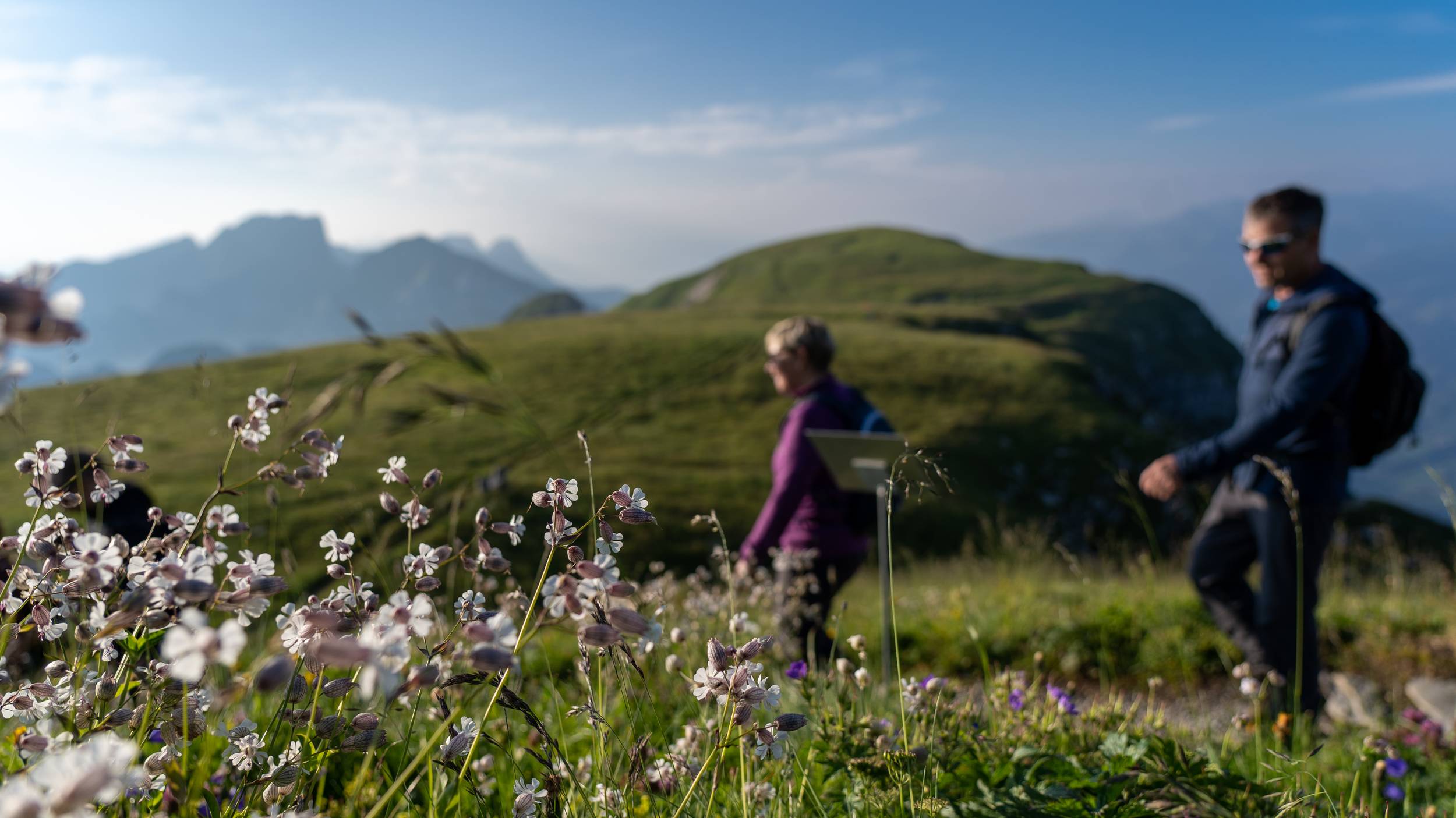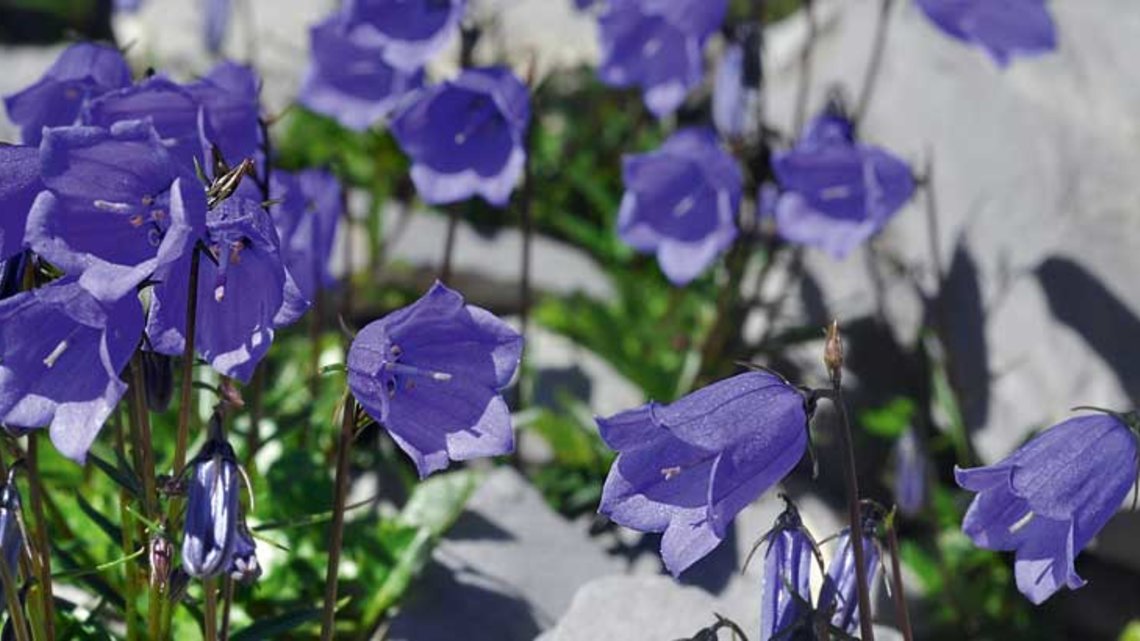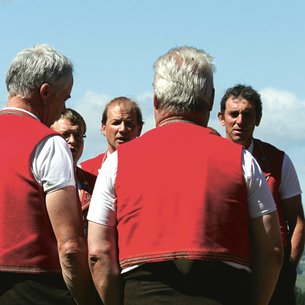The Flower Path
Hike through the high-altitude alpine garden on the Rosenboden! You will find interesting information about the unique alpine flora on glass panels along the entire themed trail, such as the significance of the various plants in mythology and their medicinal uses.

Discover the magnificent variety of alpine flowers that thrive at over 2,200 metres above sea level. Among them are many rarities and specialities to discover. Learn exciting facts about the characteristics, medicinal powers, flower symbolism and the significance of a flower in the world of mythology in short texts. Admire the last gentians in the Alpine region and at the same time the unique view of Lake Walen and the Alpstein.
However, be aware that stealing flowers from the earth spirits can easily incur the wrath of goblins, gnomes and gnomes - so it's best to leave them standing.
We will be happy to organise a guided tour for you with a local alpine farmer. You can also order the book on the flower trail from us by e-mail.
Facts
| Start | Chäserrugg |
| Destination | Chäserrugg |
| Hiking time | 120 min |
| Length | 3 km |
| Elevation | 60 m |
| Difficulty level | easy (T1) |
| Amenities | Chäserrugg Summit Restaurant |
| Highlight | Alpine flora on the summit |
Price
Chäserrugg Ticket
Ascent and descent from the valley up to Chäserrugg
Adults with Half-fare /GA Travelcard
CHF 31.–
Adults
CHF 62.–
Microcosm Chäserrugg
Aster alpinus
Aster alpinus
Flowering period: June to August
The Alpine aster can be found at altitudes well above 3,000 metres. It is a hardy and winter-resistant plant, making it an especially low-maintenance garden flower.
In dream interpretation, it is seen as a symbol. The flower stands for dignity, recognition, and honour. Traditionally, white or black asters are interpreted as harbingers of illness and death. Colourful varieties, such as the Alpine aster, on the other hand, represent late-blooming love. After all, the aster is the flower of autumn — and of the autumn of life.
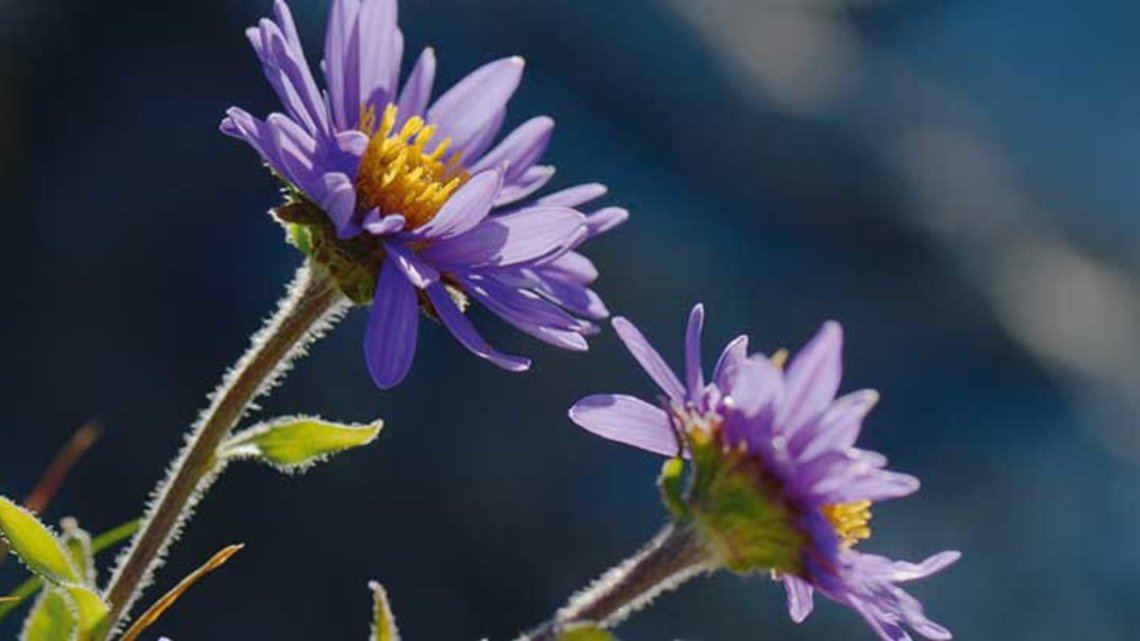
Alpine Buttercup
Ranunculus alpestris
Flowering period: June to August
A particularly tough character, this plant is adapted to long winters and begins to grow even beneath the snow. The Alpine buttercup climbs to over 4,000 metres above sea level in Switzerland and is rightly considered the king of alpine flowers.
In local dialect, it’s also known as gamsblümlein (“little chamois flower”), as it is a favourite food of mountain chamois. Cows, however, avoid it — and for humans, it is actually poisonous.
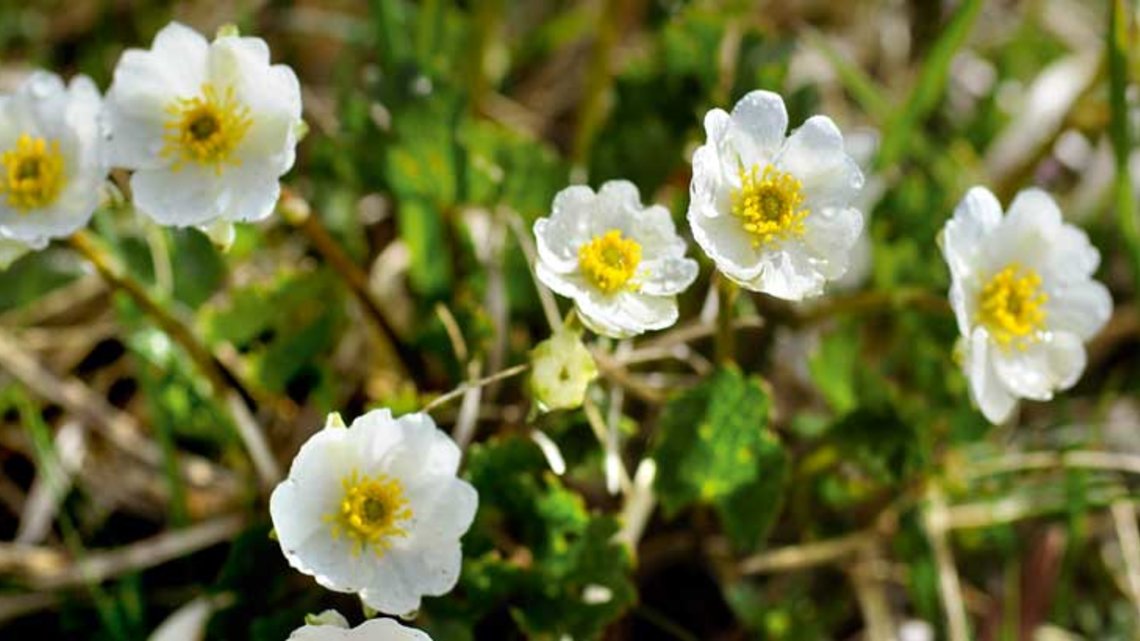
Alpine lovage
Ligusticum mutellina
Flowering period: June to August
An ancient medicinal herb and valuable livestock fodder: the Alpine lovage, traditionally known as "mother root", has long been used to treat various women’s ailments. It is believed to stimulate appetite, detoxify the body, strengthen the heart, and promote milk production. In folk medicine and so-called “witches' remedies,” it was also used after difficult childbirths.
According to herbalist Father Künzle, lovage tea can help with weakness of the “urinary apparatus” and heart conditions. The leaves can also be applied directly to wounds.
Folk belief holds that the plant grows wherever drops of the Virgin Mary's breast milk fell to the earth.
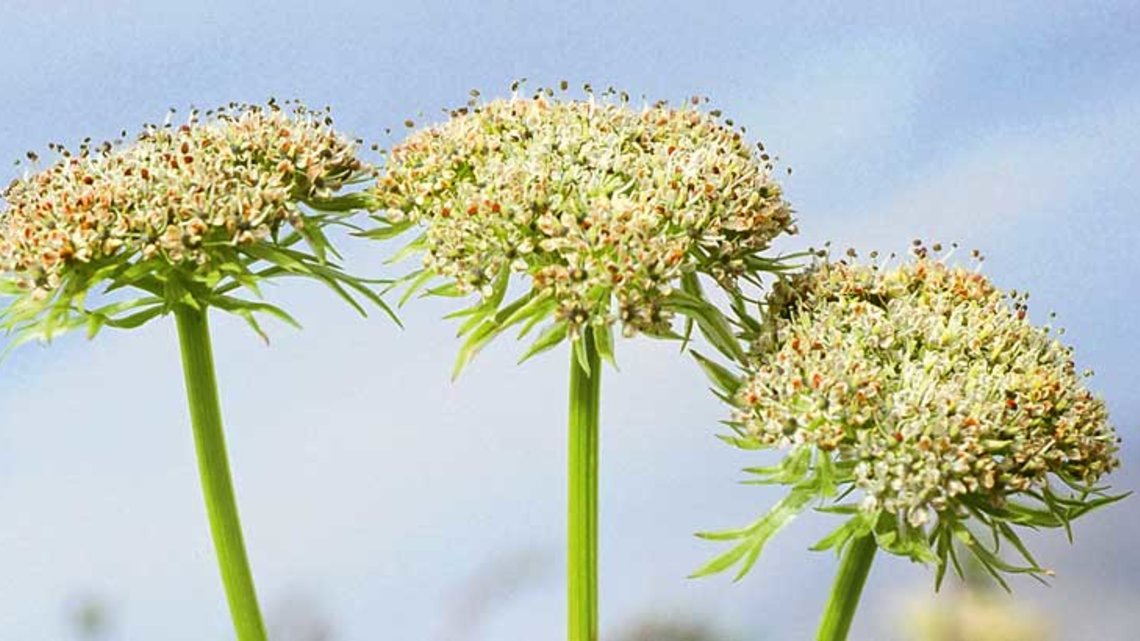
Alpine forget-me-not
Myosotis alpestris
Flowering period: June to July
Such a delicate, modest little flower — and yet so famous. But it wasn't always that way. Because no one could ever remember its name, the plant was eventually renamed “forget-me-not.” Since then, this well-known flower has carried the same name in many languages: “forget-me-not” in English, “ne m’oubliez pas” in French, and in Chinese, “wu wang cao” (勿忘草), meaning "don’t forget herb."
During its blooming period, the tiny plant gradually changes colour — from a soft reddish hue, to a gentle violet, and finally to the iconic sky blue we know so well.
Over time, the forget-me-not has taken on deep symbolic meaning. It stands for remembrance, farewell, and love.
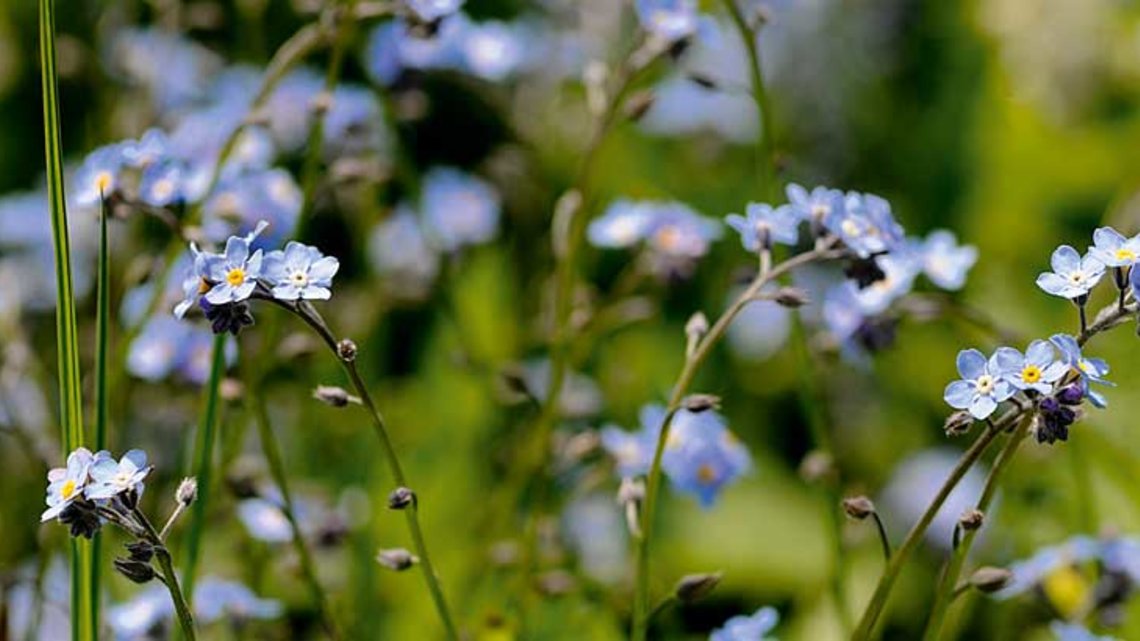
Alpine Lady's Mantle
Alchemilla alpina
Flowering period: June to August
This plant is associated with Venus and is said to enhance the “third eye” and clairvoyance when dabbed on the forehead. Known in German as Silbermänteli (“little silver cloak”), it is used in herbal medicine as a tea to relieve women’s ailments, and is also said to help with joint pain.
For a long time, alchemists believed that the droplets on its leaves possessed secret powers. In reality, however, the shimmering drops that form at the tips of its leaves—giving the plant its magical sparkle—are not dew, but fluid secreted from within the leaf itself.
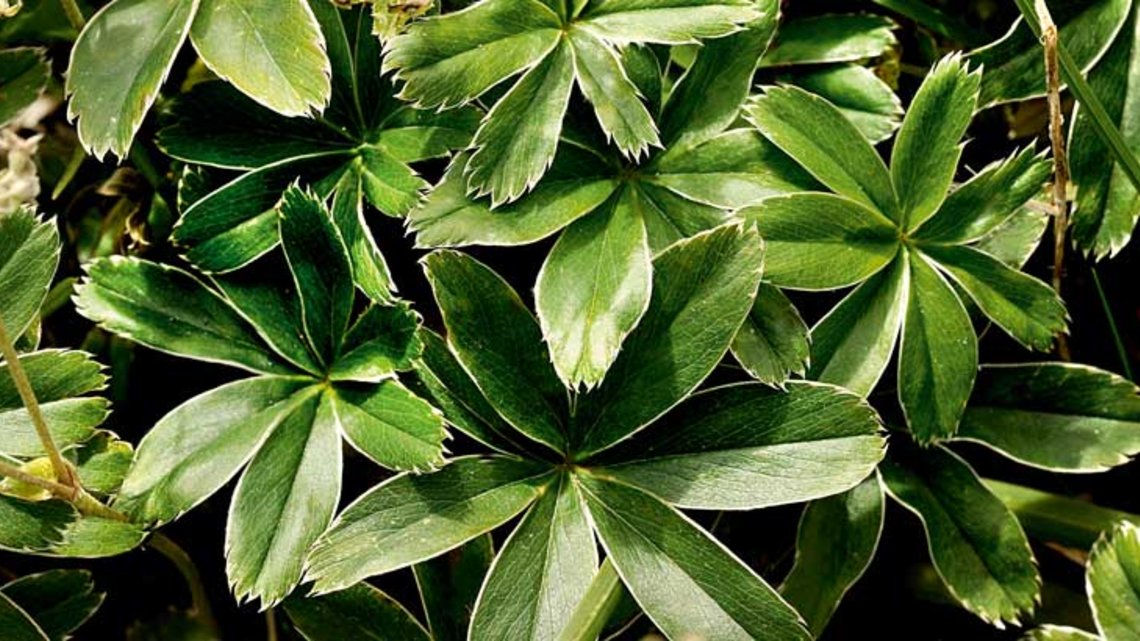
Arnica
Arnica montana
Flowering period: June to August
It’s no coincidence that this plant is officially listed as a medicinal herb in the Swiss Pharmacopoeia. Its active compounds have a soothing effect on joints and muscles. Arnica is also well known for its anti-inflammatory and pain-relieving properties.
Today, internal use of arnica is limited to homeopathic preparations — meaning the active substance is highly diluted. The most well-known form is probably homeopathic globules.
Arnica has long been considered a magical plant. It was said to protect against lightning strikes and ward off the mischief of witches. According to a mystic, its substances could ignite wild, passionate love. Perhaps that’s why men in earlier times were fond of adding a pinch of arnica to their snuff.
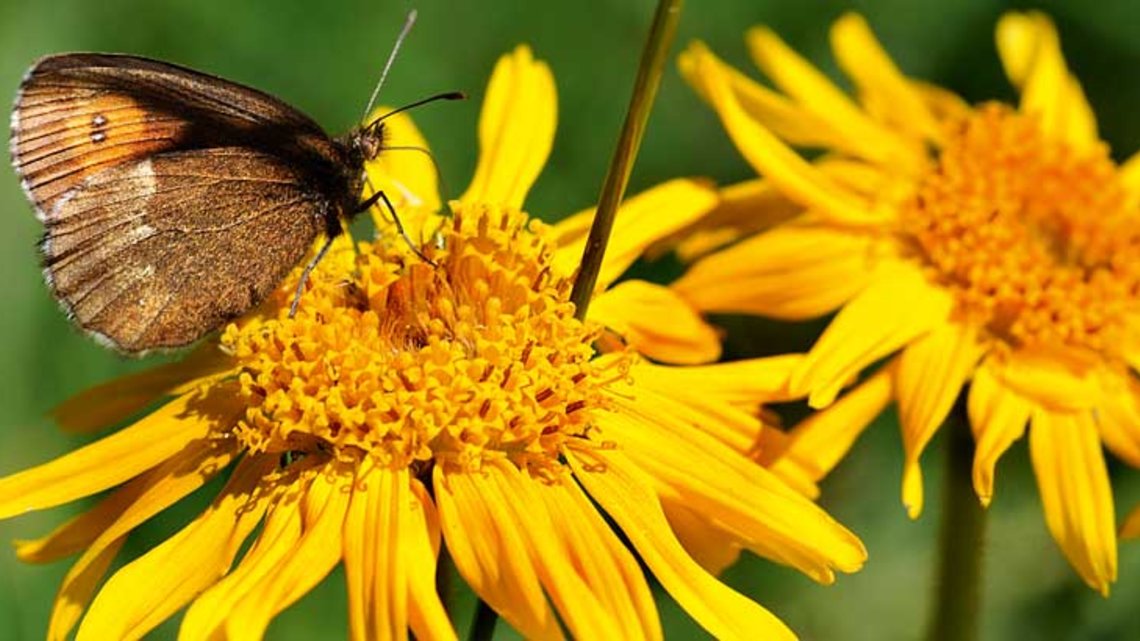
Mountain Cornflower
Centaurea montana L.
Flowering period: May to August
The brilliantly radiant perennial cornflower is a true beauty of the alpine meadows. It’s no surprise, then, that its active ingredients are now used in beauty products, as well as body and bath oils. This plant is said to encourage us to love our bodies and see them as beautiful.
In earlier times, the cornflower was also used as a medicinal herb for digestive issues. Interestingly, in particularly warm years, it may even bloom a second time in autumn.
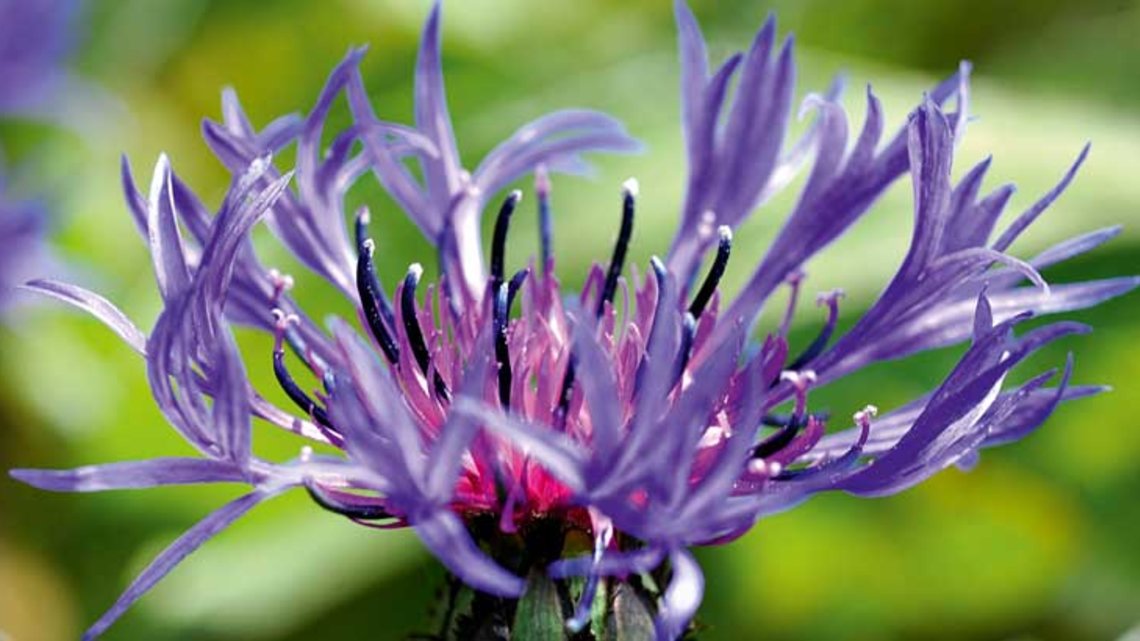
Blue Monkshood
Aconitum napellus
Flowering period: June to August
The seductively beautiful, deep blue monkshood covers our alpine meadows in great numbers. But beware — it proudly holds the title of the most poisonous plant in Europe. Just one and a half grams of its root can be fatal to a human. In earlier times, it was used as arrow poison and for deadly plots. Even British author Agatha Christie was fond of using it to dispatch her characters into the hereafter. And in Harry Potter, it appears under the name wolfsbane, brewed into magical potions.
In the language of symbols, monkshood declares: “I am at your service” — whatever that may mean…
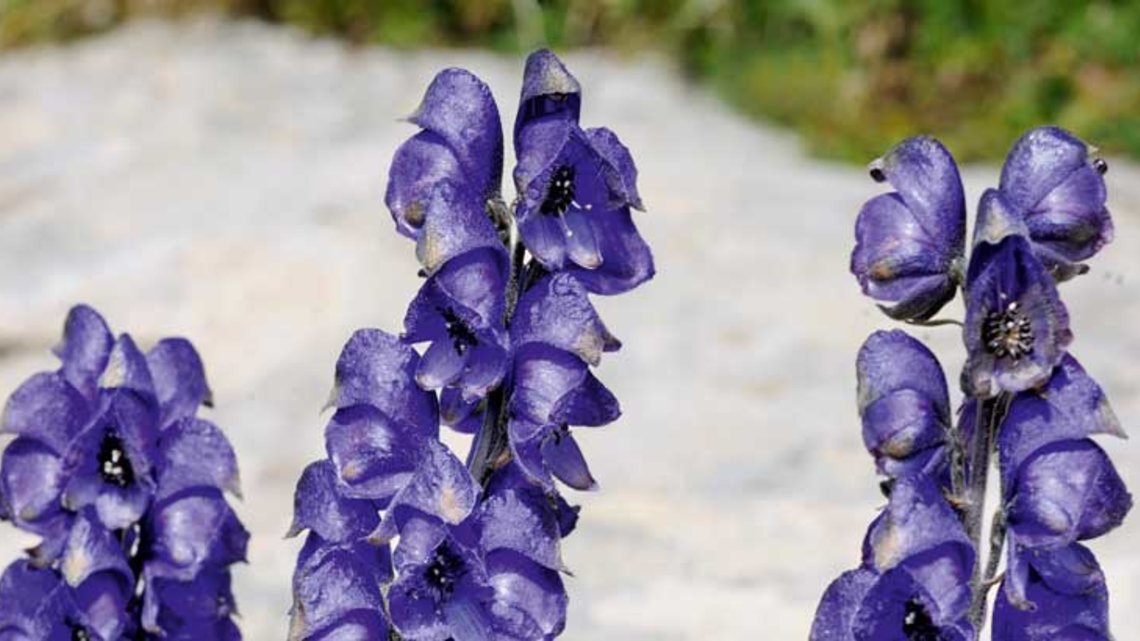
Brown Clover
Trifolium badium
Flowering period: July to August
The flower heads of brown clover consist of about sixty tiny individual blossoms. These are golden yellow at first and gradually turn brown as they age. Rich in minerals, this forage plant is especially loved by sheep.
Brown clover isn't limited to the Alps — unlike many other mountain flowers, it prefers calcareous soils. Once it finds the right ground, it doesn’t much care whether it's growing at 600 or 3,000 metres above sea level.
By the way: the chance of finding a four-leaf clover depends on location but is roughly 1 in 10,000. According to the Guinness Book of Records, the world record is held by a clover with eighteen leaflets.
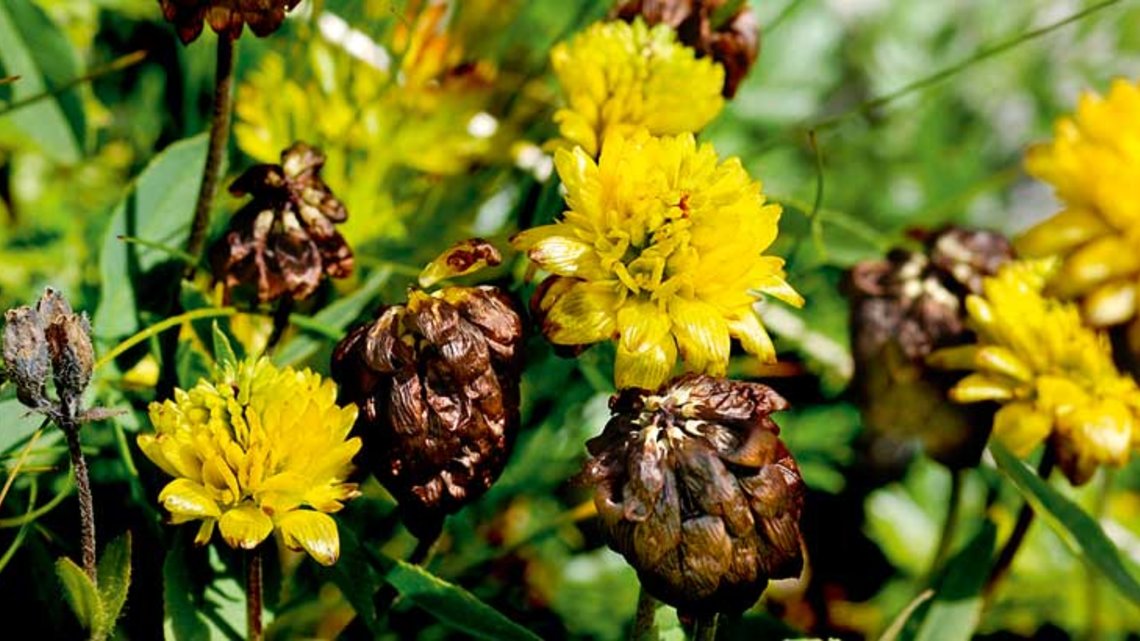
Clusius’ Gentian
Gentiana clusii
Flowering period: May to August
A true showpiece among alpine flowers. With its vibrant blue corolla and exceptionally short stem, it is, alongside edelweiss, considered the alpine flower par excellence.
But it’s not just a visual delight — it is also valued for its medicinal power. It has long been used as a cleanser for the blood, liver, and spleen — something the last Illyrian king is said to have recognised as early as 180–168 BC. That might be why this gentian looks familiar: it still adorns the packaging of various medicinal products today.
The roots of Clusius’ gentian contain the most bitter natural substance known to science — a compound that remains detectable even after extreme dilution, millions of times over.
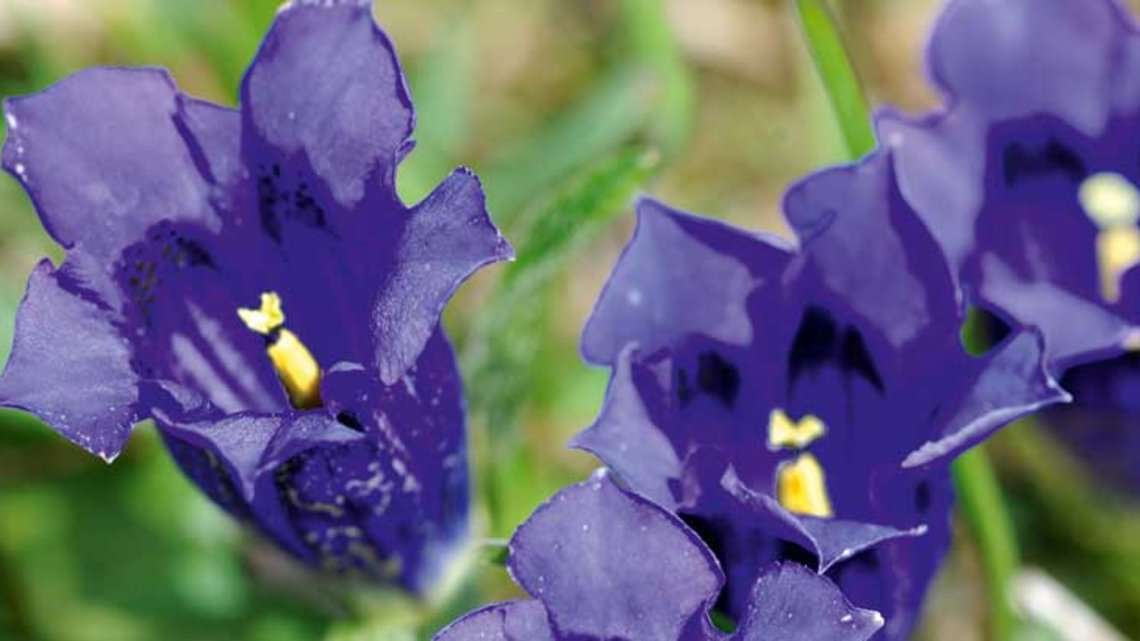
Cliff bloom
Primula auricula
Flowering period: May to June
In Latin, it is called Primula because it is one of the first to bloom in spring. This unpretentious little flower has survived the Ice Age and can even thrive on exposed rocky cliffs. That’s why it’s sometimes called “dizzy flower” or “cliff bloom.” “Flühblümchen” – this charming Swiss-German term roughly translates to “little cliff flower.” It refers to hardy, delicate alpine plants like the auricula that grow on steep, rocky slopes known as Fluhen (a dialect word for cliff faces or crags). The term beautifully combines alpine resilience with a poetic tenderness that seems to blossom only in the high mountains.
The auricula is a type of primrose — and a symbolic one at that. A bouquet of cliff primroses says nothing less than: “Give me the key to your heart.”
In folk medicine, both the roots and flowers are used as a remedy for coughs and colds, as well as for calming the nerves and easing headaches. And if an auricula appears in your dreams at night, fortune is said to smile upon you — in gambling and in love. It is, after all, the key to hidden treasures — or so dream lore has it.
But if you want to see it in the wild, don’t wait too long — chamois are known to enjoy this delicate flower for dessert.
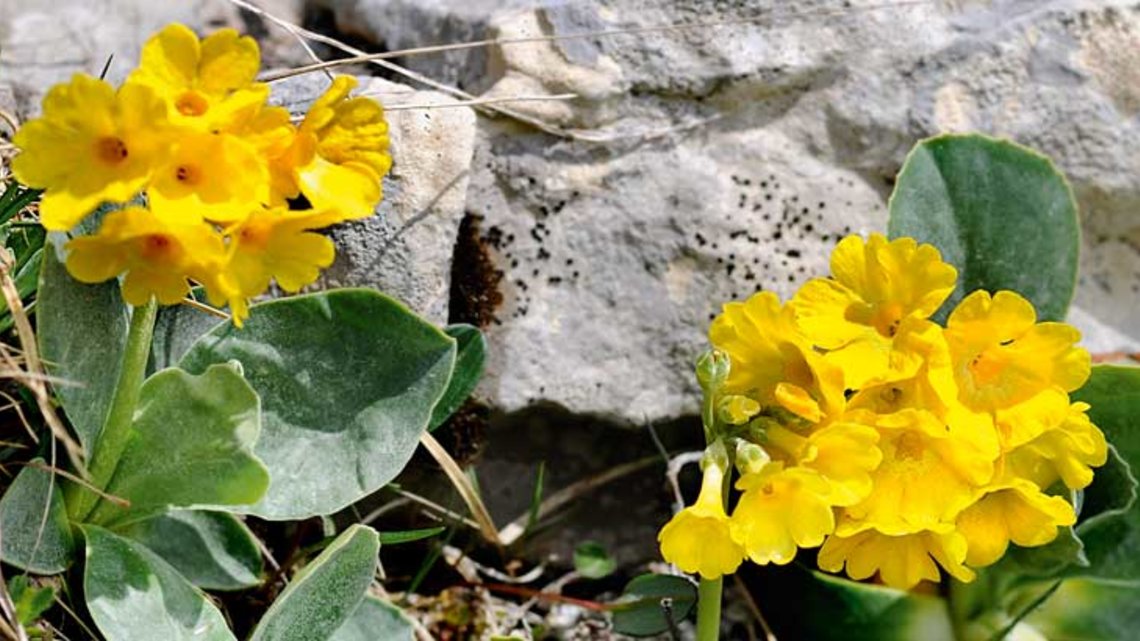
Spring Anemone
Pulsatilla vernalis
Flowering period: April to June
The dense coat of fine hairs on the spring anemone protects it from wind and weather — which is why it’s also known as the fur anemone.
In Greek mythology, Anemone was a nymph at the court of the goddess Flora. When Flora’s husband, Zephyrus, fell in love with her, the jealous goddess turned Anemone into a flower. In the language of symbolism, the anemone carries this message: “I feel abandoned and long to be with you.”
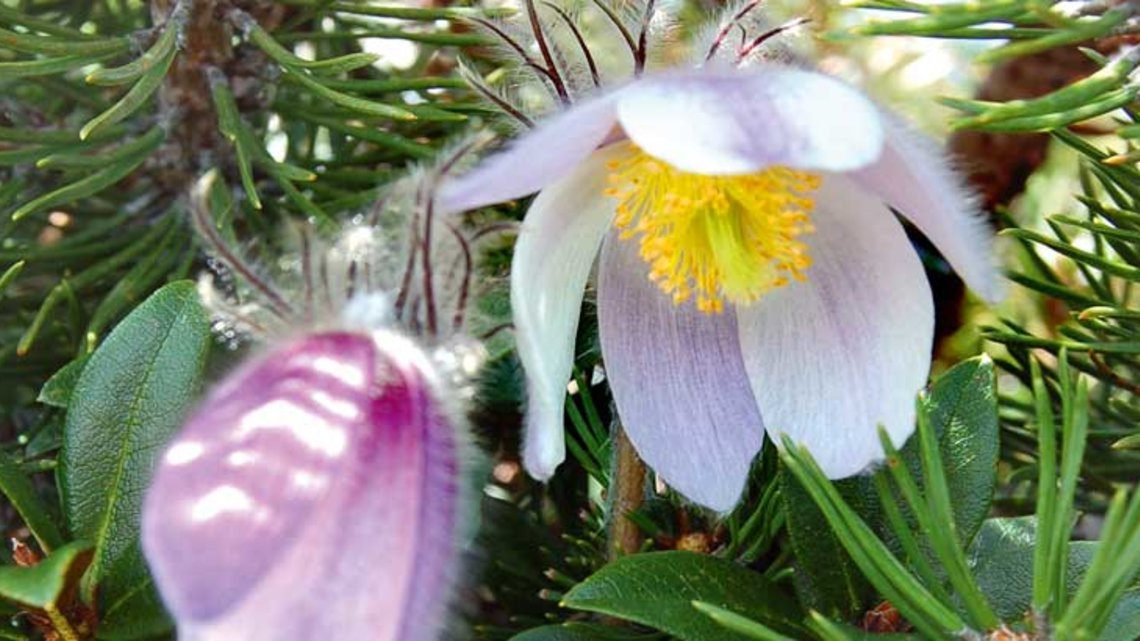
Spring Gentian
Gentiana verna
Flowering period: April to May
It appears as the snow begins to melt, captivating with what is said to be the purest and deepest blue in the plant world. The spring gentian therefore stands for loyalty and breathtaking beauty.
Livestock avoid the bitter-tasting plant, which is why it thrives on pastures. But beware — according to folklore, bringing this flower into your home could start a fire. It’s said that lightning will strike the house during the next thunderstorm.
Collector’s tip: The spring gentian is featured on the Austrian 1-cent euro coin.
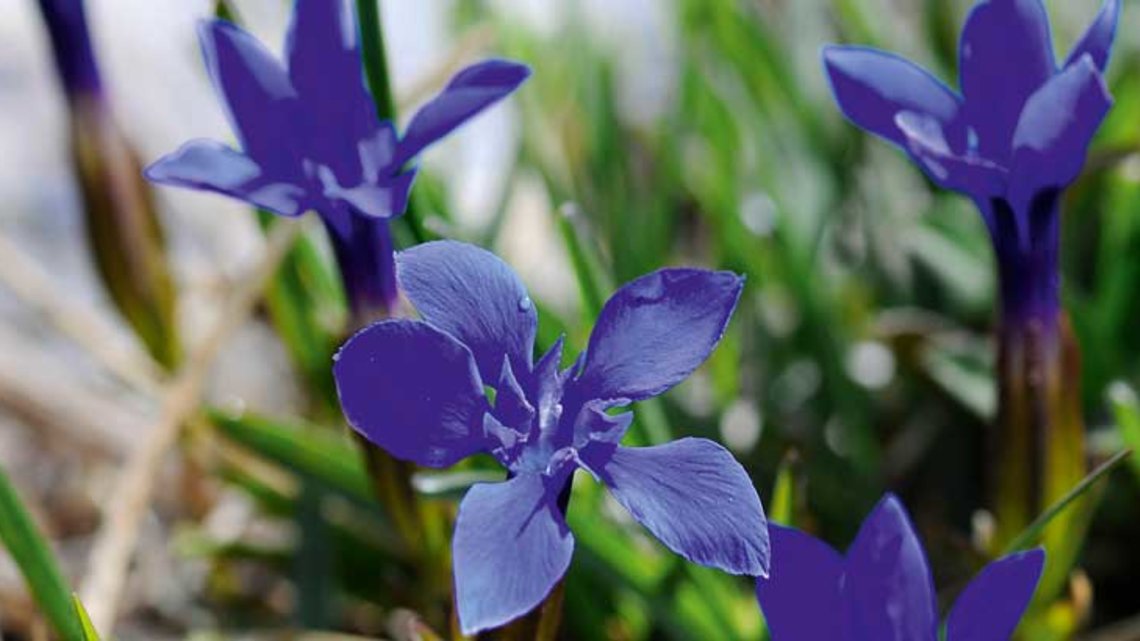
Bladder Campion
Silene vulgaris (Moench) Garcke
Flowering period: June to September
The bladder campion is a true feast for insects, as it blooms both day and night. After dusk, it releases a sweet, enticing fragrance that attracts numerous nocturnal moths such as owlet moths, geometrid moths, and hawk moths.
But this plant has also long served humans: young shoots were once eaten as a wild vegetable — also called “meadow spinach” — while its fresh juice was used as eye drops, and the roots made into a natural soapy lather for washing.
Children especially love its puffed-up flower heads — known as “poppers” — which make a satisfying snap when slapped against the back of the hand. That’s where its Swiss-German nickname “Klatschnelke” comes from — based on the word “klatschen,” meaning to clap or smack.

Golden Hawk’s-Beard
Crepis aurea
Flowering period: June to August
There are around two hundred different species of hawk’s-beard — ranging from the stinking and bristly to the beautiful. But the golden hawk’s-beard stands out with its vivid hues of orange to fiery red.
In the Toggenburg region, farmers affectionately call it the “cow flower,” as livestock are particularly fond of grazing on it. Some hawk’s-beard species are also valued as fodder and are even considered a tasty treat by parakeets and parrots.
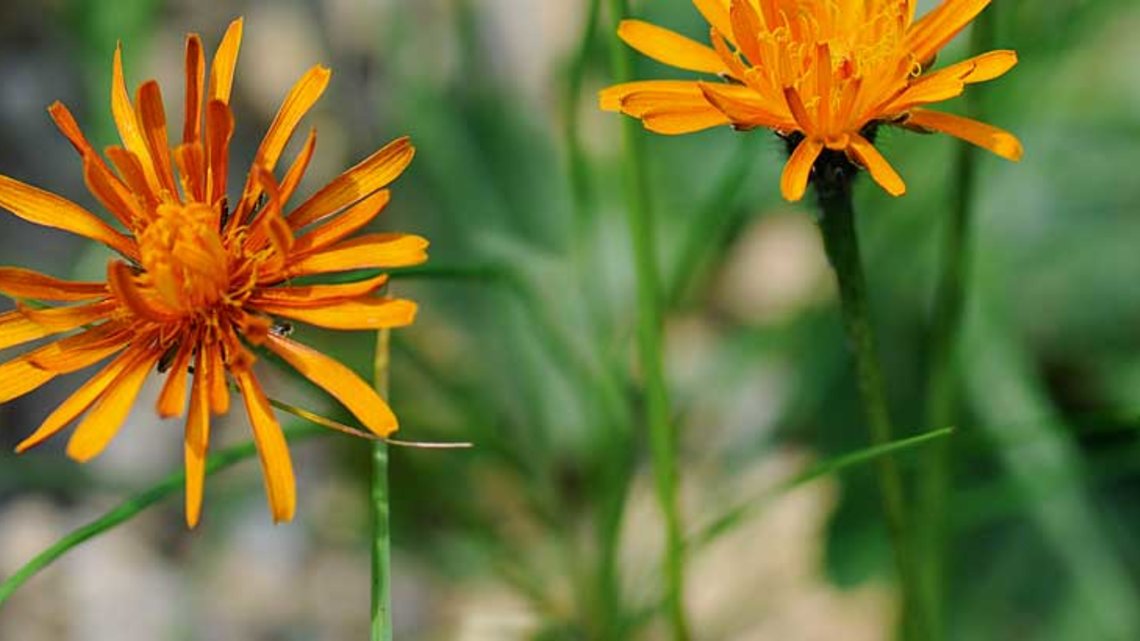
Large-flowered Leopard’s Bane
Doronicum grandiflorum
Flowering period: July to August
A true high-altitude dweller, this plant grows at elevations of up to 3,400 metres. Alpine herders use its sweet-scented herb to flavour mountain cheese and ziger — a traditional Swiss fresh cheese made from whey, often seasoned with herbs.
Roofers and chamois hunters once hoped that eating it would give them a head for heights — just like the sure-footed chamois.
According to folk belief, the root’s effects depend on the moon: taken during a waxing moon, chamois root is said to aid sleep; during a waning moon, it’s believed to act as a stimulant.
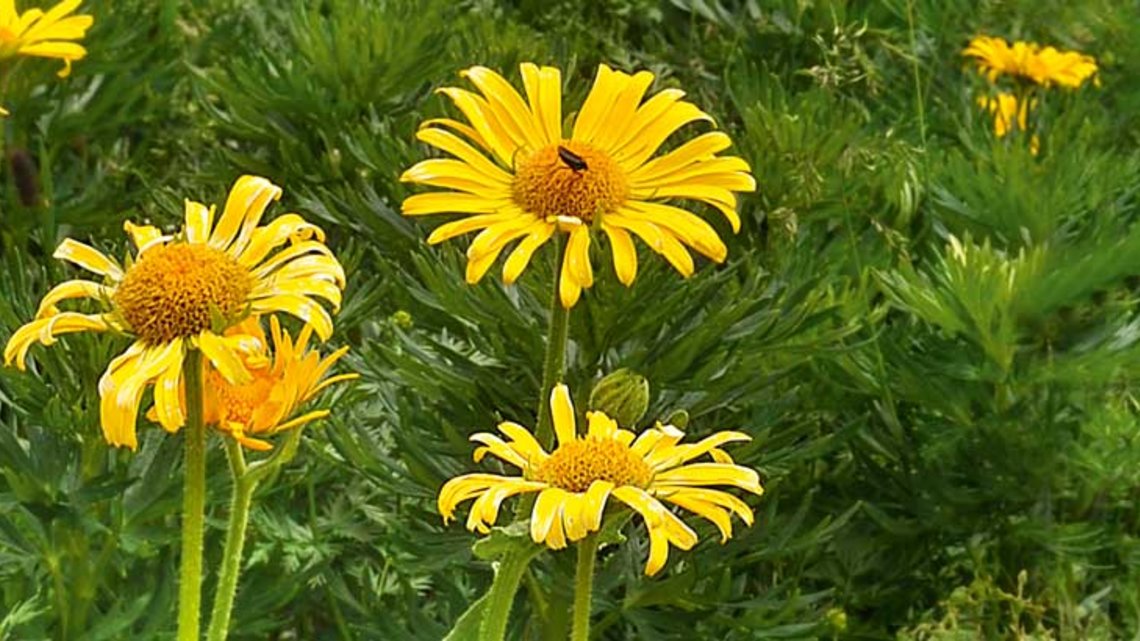
Haller’s Yarrow
Achillea atrata L.
Flowering period: July to August
Even the Romans used yarrow to treat their wounded soldiers. As recently as World War II, its blossoms were still applied to open wounds. According to the herbalist Father Künzle, this plant has antibiotic properties and is particularly beneficial for strengthening the organs of motherhood.
Folklore has it that if you hold the flower to your eyelids, you can sense who is thinking of you. And if you place it under your pillow at night, you will dream of your future spouse.
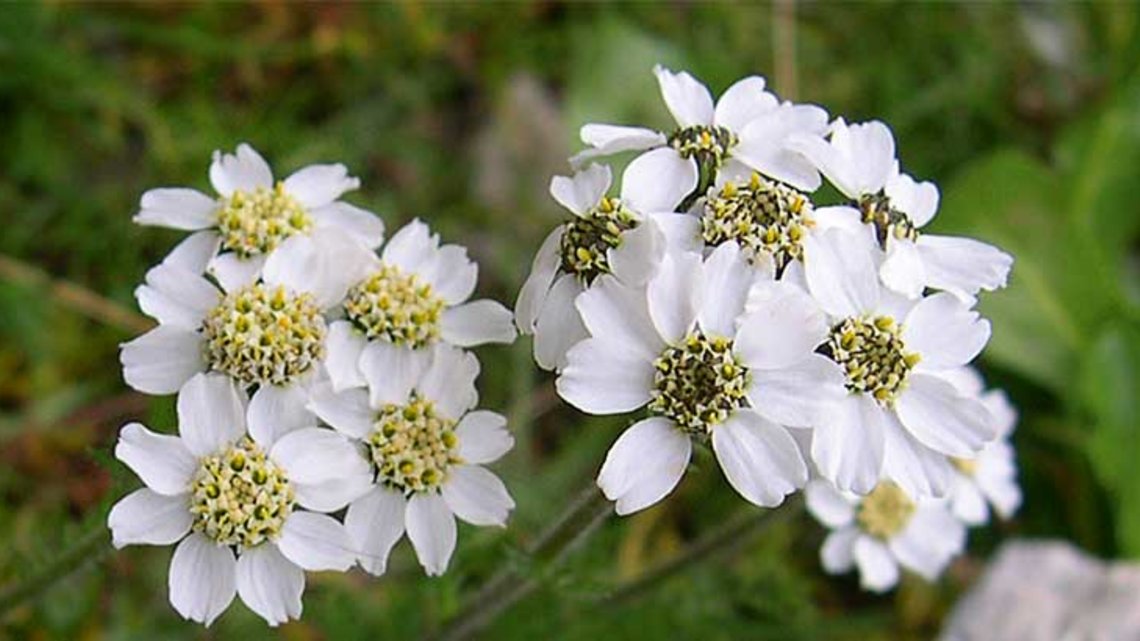
Round-headed Rampion
Phyteuma orbiculare
Flowering period: May to July
In earlier times of hardship, this plant served as a wild vegetable. Its leaves were used in salads or cooked like spinach. But caution is advised: this species should not be confused with the medicinal plant from southern Africa, also known as devil’s claw, which is used to treat joint pain.
With its extravagant, tube-shaped flowers, the round-headed rampion — also nicknamed devil’s claw — can grow up to fifty centimetres tall.
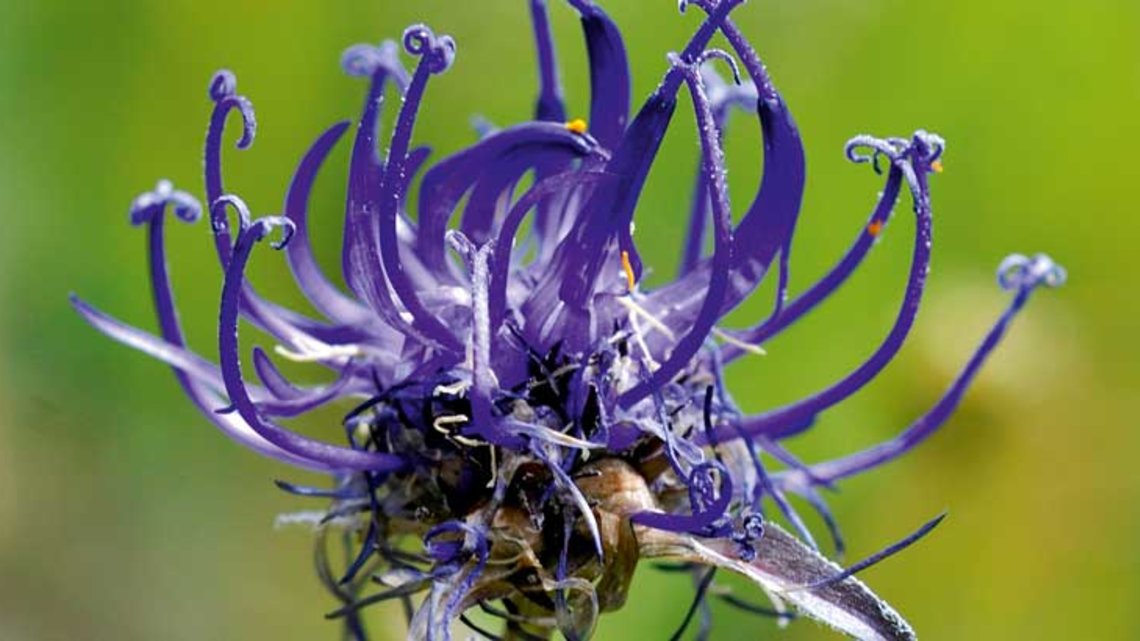
Bird’s-eye primrose
Primula farinosa
Flowering period: May to June
A particularly delicate creature in a lilac floral dress, surrounded by a wonderful fragrance. As Heinrich Heine once said: “Fragrances are the feelings of flowers.” In the language of flowers, the bird’s-eye primrose stands for contentment as the highest form of happiness.
The name of this primrose comes from the mealy-white coating on the underside of its leaves — a natural defence barrier against tiny pests.

Masterwort
Peucedanum ostruthium
Flowering period: June to August
The famous hermit-healer Paracelsus always carried this root with him, performing what many considered true miracles. It’s said that even the paralyzed and those struck by apoplexy were able to rise again. Back then, the plant was known as Imperatonia — the Empress.
Its active compounds are believed to relieve toothaches, and when powdered and sniffed, to ease cold symptoms. In the Toggenburg region, it was customary to hang dried masterwort plants in rooms and wardrobes to banish unpleasant odours.
And psst… rumour has it that masterwort is part of the strictly guarded secret recipe of Appenzeller Alpenbitter.

Fringed Pink
Dianthus superbus
Flowering period: July to September
“Superbus” means proud and magnificent — a name that perfectly captures the beauty and delightful fragrance of this flower. Its deeply fringed petals are pure showmanship: bees, it turns out, are particularly drawn to intricately divided blossoms.
The fringed pink can be grown in home gardens, and if desired, enjoyed on the plate as well. Its blossoms are edible, with a light vanilla-like flavour that adds an elegant touch to any dessert.
Carnations carry strong symbolic meaning. For women, they represent close friendship. For men, dreaming of carnations is said to suggest thoughts of ladies of the night. And for children, a bed “decorated with little pinks” is believed to bring peaceful sleep.
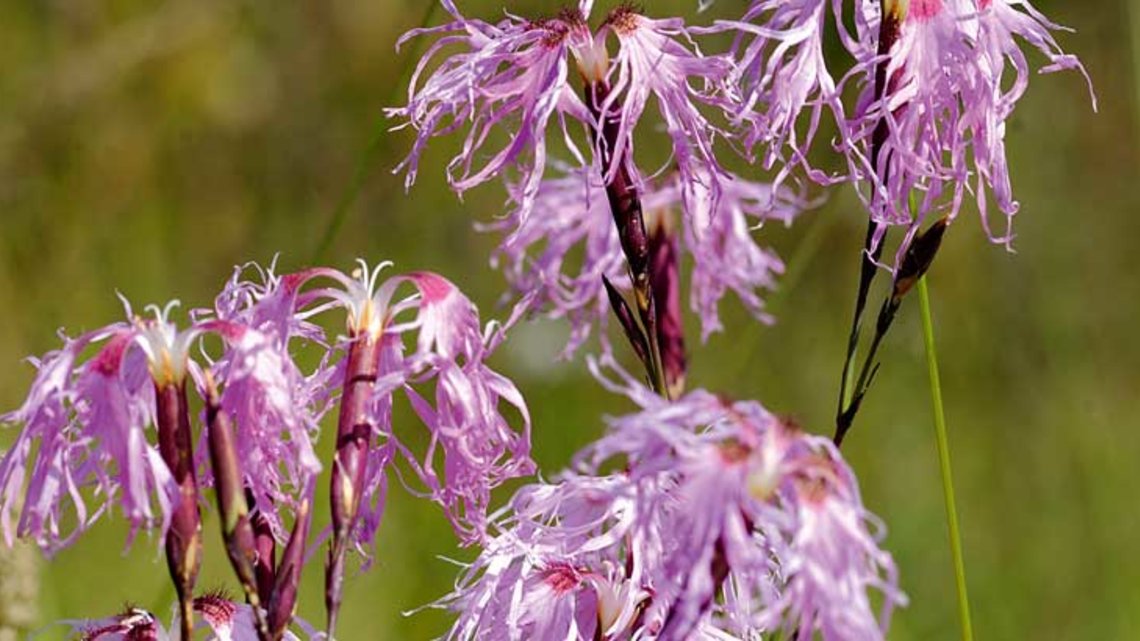
Whorled Lousewort
Pedicularis verticillata
Flowering period: June to August
With its striking purplish-red blooms, this plant is one of the most beautiful flowers on alpine meadows. However, its beauty comes with a reputation: lousewort — as its name suggests — was once used to combat lice.
The plant is toxic, has an unpleasant smell, is avoided by grazing animals, and survives as a semi-parasite, drawing nutrients from the roots of neighbouring meadow plants.
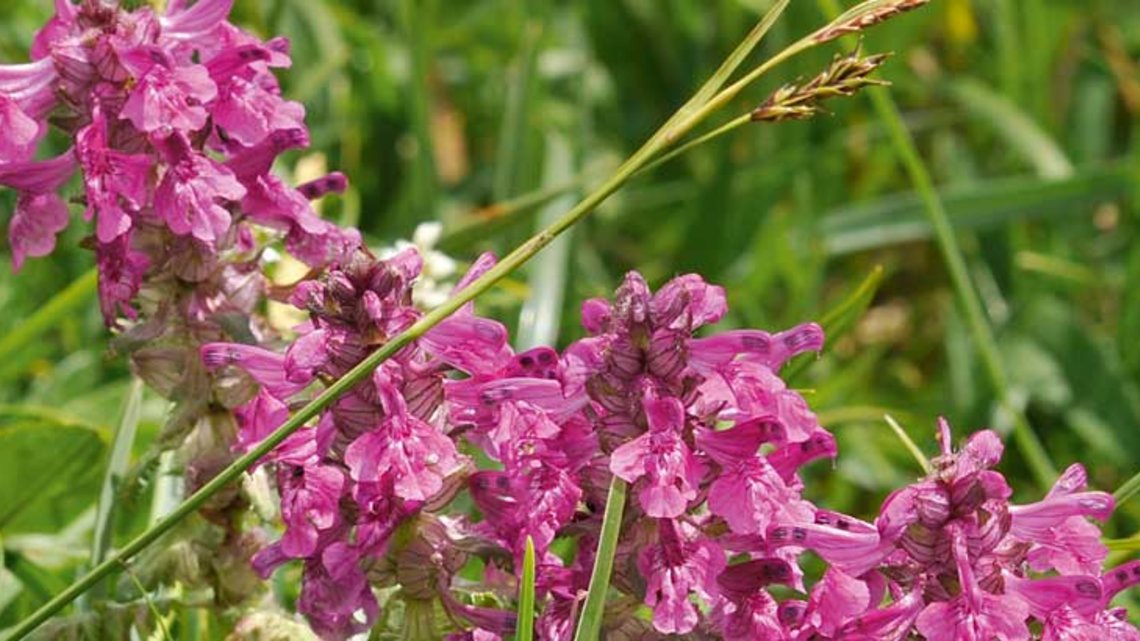
Stemless Carline Thistle
Carlina acaulis
Flowering period: July to September
In Toggenburg, people say that a snowy winter is on its way when the stemless carline thistle grows unusually long stalks. With its many shimmering silver bracts, it’s a visual gem on any alpine meadow. Perhaps it’s not just its beauty that earned it the title of national flower of Scotland?
In folk medicine, the thistle is considered a universal remedy — said to work wonders for acne, lumbago, and even the flu. In veterinary medicine, it’s used both as a fattening agent and to treat swine diseases.
For hunters and gatherers, it was always a welcome side dish to a simple meal. The base of the flower tastes similar to an artichoke, which is why it’s still affectionately called “alpine cheese” or “hunter’s bread.”
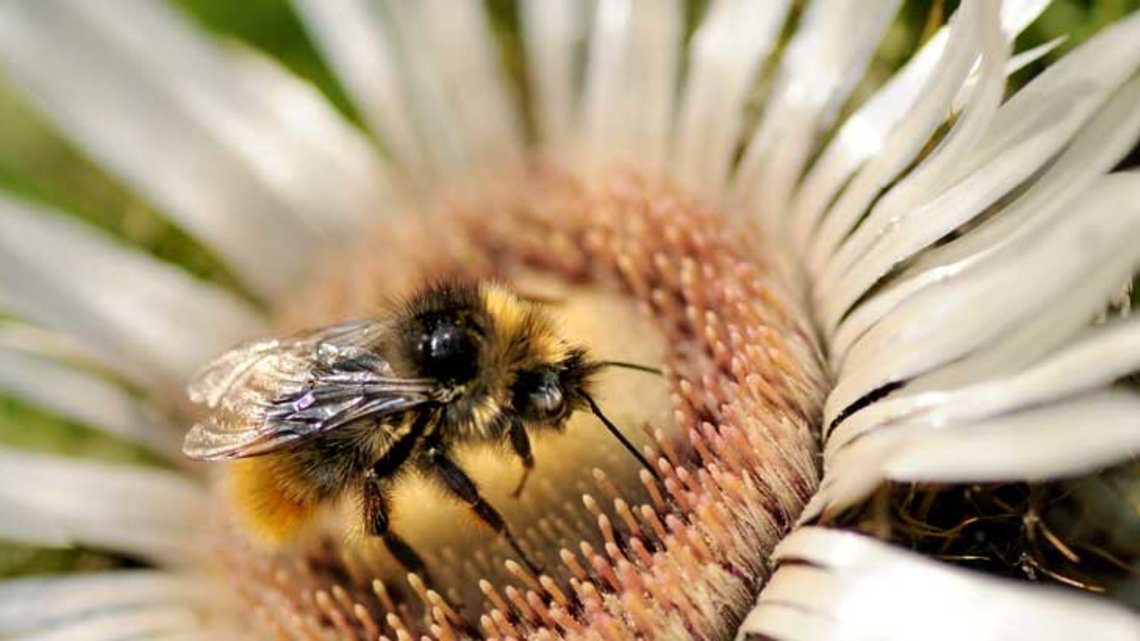
Mountain Avens
Dryas octopetala
Flowering period: June to July
The mountain avens is a true character among alpine plants. In fact, this unassuming little flower lent its name to an entire period of the Ice Age — the Younger Dryas period. Its blossoms, seeds, and pollen have survived in layers of clay sediment since the glacial era.
But this hardy survivor is more than a relic. While most members of the rose family bear five petals, mountain avens stands out with eight — a subtle but striking exception.
As a medicinal plant, it is said to have protective effects against strokes. The mountain avens is also the symbolic flower of Lapland and the national flower of Iceland.
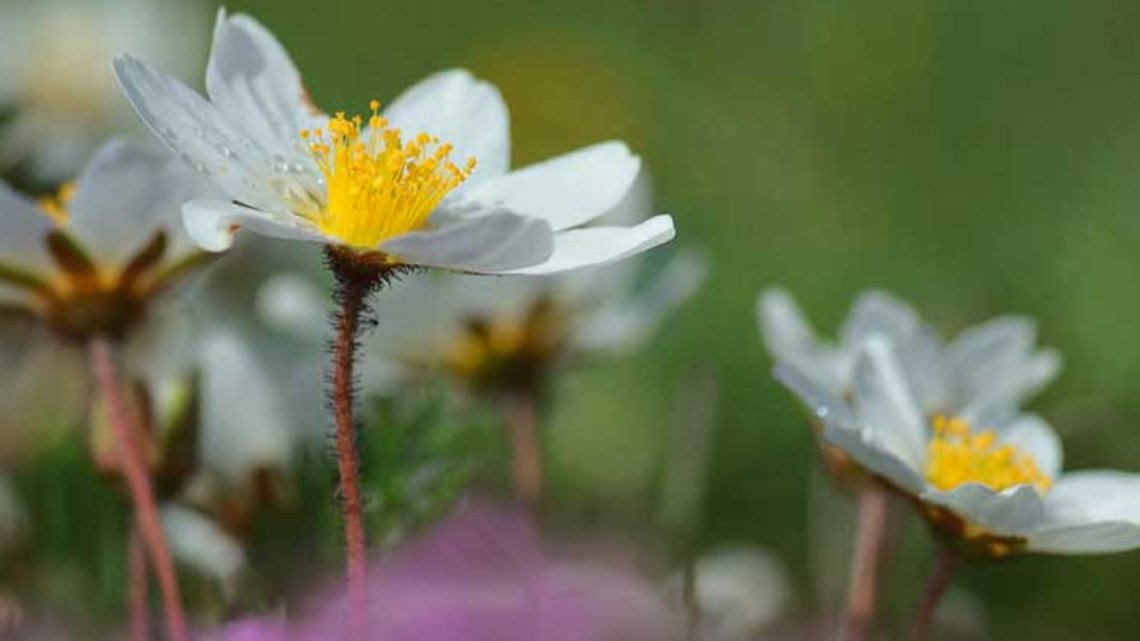
Scheuchzer’s Bellflower
Campanula scheuchzeri
Flowering period: July to August
According to old legends, the bright chiming of the bellflower lures fairies to dance, enchanted by the sound made by the tiny bells. So if you don’t want to anger the little folk, it’s best to leave these flowers untouched.
The Swiss children’s book illustrator Ernst Kreidolf (1863–1956) often depicted his whimsical fairy figures wearing dainty bellflower bonnets.
In the language of flowers, the bellflower stands for harmony and carries the message: “Our hearts beat in unison.”
Black Vanilla Orchid
Nigritella nigra
Flowering period: July to August
If cows were to graze too much on this plant, their milk, butter, and cheese might take on a bluish tint — with a hint of vanilla. Perhaps that’s why people call it the vanilla orchid.
Like all orchids, the black vanilla orchid is protected throughout the country. It loves warmth and favours south-facing slopes. On the Rosenboden, however, it is a rare sight.
But those with especially fine noses may have already encountered it while hiking: with its rich, chocolatey scent, the black vanilla orchid is one of the more fragrant surprises of the Alps.
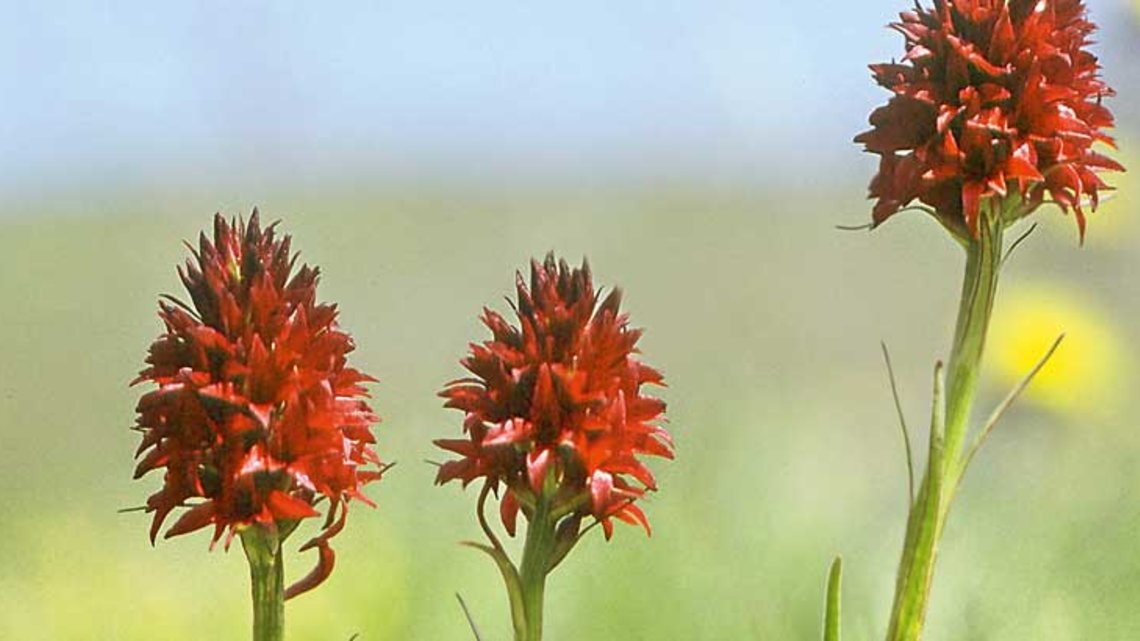
Alpine Pasqueflower
Pulsatilla alpina ssp. alpina
Flowering period: May to July
To our ancestors, this plant with its silky, shimmering tuft seemed eerie and otherworldly. Some even believed it marked the spot where a hunter had shot down a flying witch.
Hippocrates used the poisonous anemones to treat states of hysterical fear. Once the alpine pasqueflower has finished blooming, it surprises hikers with its wild, tousled appearance. In Swiss dialect, it's then affectionately known as Altmaa or Tschudermanne — “old man” or “scare-man.”
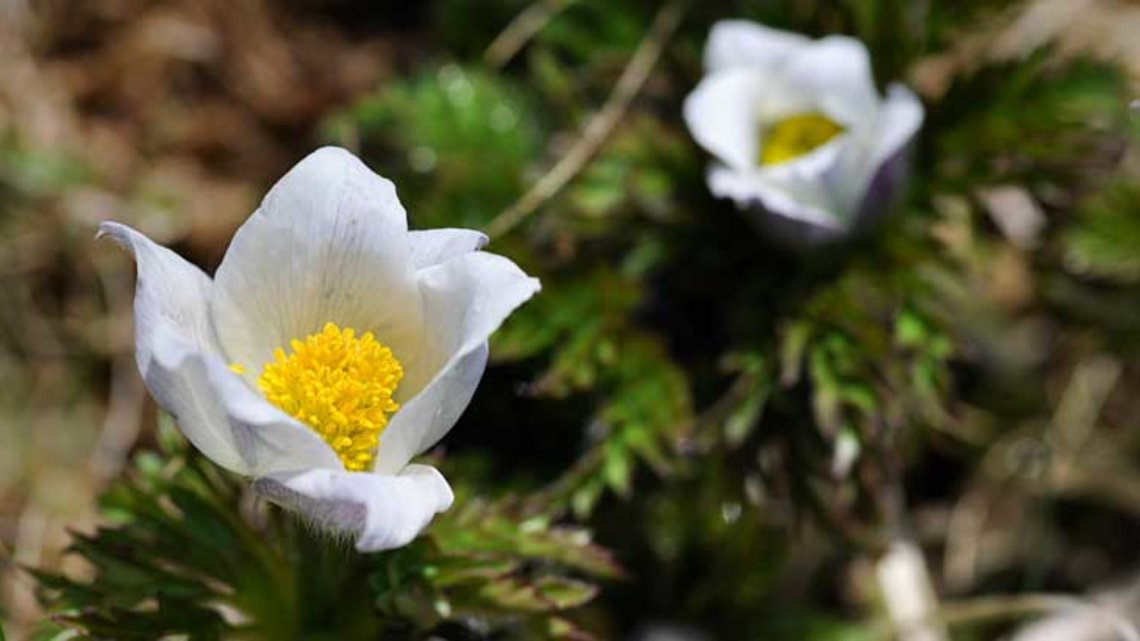
Available at Unterwasser Station
The Chäserrugg impresses with its rich flora and fauna as well as its breathtaking panoramic views.
This book (in German) spans 144 pages and is dedicated to the easternmost peak of the Churfirsten range. It offers fascinating insights into the region’s wildlife and plant life, accompanied by numerous full-colour illustrations.
At 2,262 metres above sea level, the Chäserrugg is one of the most striking elevations on the northern side of the Alps. However, its steep slopes do not lead to a traditional mountain summit, but rather open up unexpectedly into a vast, almost flat high plateau. This unusual topography makes it especially easy for visitors to explore and experience the impressive mountain landscape — whether hiking in summer or snowshoeing and skiing in winter.
The book is available at the Tourist Info Center shop in Unterwasser Station.
There, you'll also find a variety of other books and exciting regional products — perfect for souvenirs and lasting memories.


